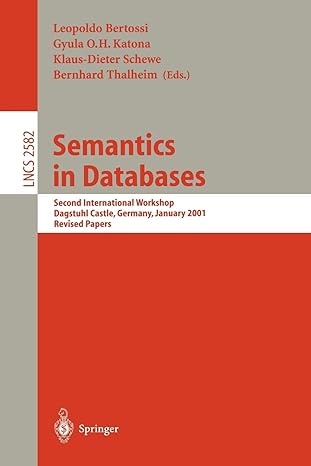Question
Must be written in Java Language For this assignment, you will calculate the heating and cooling loads for a typical residence.The wintertime heating load is
Must be written in Java Language
For this assignment, you will calculate the heating and cooling loads for a typical residence.The wintertime heating load is all of the heat that flows out of the building when the outside temperature is nearly itscoldest and when there is no free heat provided by sunshine or internal lights or appliances.The coldest time is typically in the middle of January.The summer time cooling load is all of the heat thatflows into the building when the outside temperature is nearly its hottest, the outside humidity is high,there are no clouds to block the sun, and the building is occupied with normal lighting and appliance usage.The hottest time is usually about 3:00PMin the middle of July.
Assume that four design parameters are constant:The winter indoor design temperature is 72oF, the summer indoor design temperature is 76oF, the summer indoor design humidity ratio is 0.01 lbs of water vapor per pound of dry air, and the sunshine coming in through west windows at the designtime is 193 BTU/hr/ft2.(This is the value for 40 deg North Latitude at 3:00PM on July 21.)The remaining design parameters are user inputs:total roof area, building perimeter, building height, totalarea of windows and doors, total area of west-facing windows, roof U-value, wall U-value,windowand door U-value, winter outdoor design temperature, summer outdoor design temperature, summeroutdoor humidity ratio, infiltration ratein cubic feet per minute (CFM), number of people present,and electricity in use.1Consider doors to be additional windows.The outputs of the program are total heating BTU/hrtotal cooling BTU/hr, and the cooling load expressed in the nearest whole number oftons, where one ton = 12,000 BTU/hr^2
The heating-load components are as follows:
roof load area * roof U-value * winter temperature differencewindow load area * window U-value * winter temperature differencewall load net area * wall U-value * winter temperature differenceinfiltration load CFM * 1.08 * winter temperature difference
where:
winter temperature difference
winter indoor design temperature
winter outdoor design temperature
net wall area building perimeter * building heightwindow area
To provide a factor of safety and to accelerate morning warm up, multiply the total of all of the aboveheating-load components by a factor of 1.3.
The cooling-load components are as follows:
Sensible Cooling:
roof load area * roof U-value * summer temperature difference
window load area * window U-value * summer temperature difference
1)U-value is a measure of heat flow. The lower the U-value,the more slowly the material transfers heat in and out ofyour home.
2)BTU = British Thermal Unit =amount of heat required to raise one pound of water by one degree Fahrenheit (oF).
wall load net area * wall U-value * summer temperature difference
infiltration temperature load CFM * 1.08 * summer temperature
difference
solar load west solar heat gain * west window area
electrical load 3.416 * Watts
people temperature load 250 * number of people
Latent Cooling:
infiltration humidity load CFM * 4675 * summer humidity difference
people humidity load 200 * number of people
where:
summer temperature difference
summer outdoor design temperature
summer indoor design temperature
summer humidity difference
summer outdoor humidity ratiosummer indoor humidity ratio
To provide a factor of safety, multiply the total of all of the above cooling-load components by afactor of 1.1.
Make your program so that what appears on your computer screen matches the following sample session.
The first 14 lines are prompts and input values, withinput values in italics. The last 3 linesare outputs of the calculated results.
Sample session:
HVAC Load Calculation:
Enter total roof area in square ft:1500
Enter building perimeter in ft:140
Enter building height in ft:18
Enter total window area in square ft:400
Enter west window area in square ft:80
Enter roof U-value: .04
Enter wall U-value: .10
Enter windowU-value: .5
Enter winter outdoor temperature in deg F: 2.0
Enter summer outdoor temperature in deg F:100
Enter summer outdoor humidity ratio: .013
Enter infiltration in CFM:200
Enter number of people present:3
Enter electrical use in Watts:1500
Heating Load = 62608.0 BTU per hour
Cooling Load = 45354.1 BTU per hour
or approximately 4 tons
Organize the project in accordance with this UML class diagram:
The main program instantiates an HVACLoadobject namedload.Then it asks it togetInputs,findHeatingLoad,findCoolingLoad, andprintCapacities.
The getInputsmethod prompts for and inputs values for each of the instance variables.
The findHeatingLoad method uses local variables for the assumed winter indoor temperature,winter temperature difference, and winter heating load. It returns the winter heating load in BTUH.
The findCoolingLoad method uses a local variable for the summer cooling load, which accumulates values returned by findCoolingSensibleLoad and findCoolingLatentLoad. (These two load components are separated and the method for sensible cooling is public because cooling sensible load is needed independently for air-quantitycalculations, which might be included in a future enhancement of this program.) ThefindCoolingLoad method returns the summer heating load in BTUH.
The findCoolingSensibleLoad method uses localvariables for assumed summer indoor temperature, west solar gain, summer temperature difference, and sensible cooling load. It returns the summer sensible load in BTUH.
The findCoolingLatentLoad method uses local variables for the assumed summer indoor humidity ratio, the summer humidity difference, and the latent cooling load. It returns the summerlatent load in BTUH.
The printCapacities method uses a local variable for tons. It multiplies the input heating loadby the 1.3 warm-up factor and the input cooling load by the 1.1 safety factor, and computes tons.Then it prints the results.
ThenetWallAreacalculation is in a separate method because it might be changed later to a fancier algorithm, and it used by two other methods,findHeatingLoadand findCoolingSensibleLoad.
Step by Step Solution
There are 3 Steps involved in it
Step: 1

Get Instant Access to Expert-Tailored Solutions
See step-by-step solutions with expert insights and AI powered tools for academic success
Step: 2

Step: 3

Ace Your Homework with AI
Get the answers you need in no time with our AI-driven, step-by-step assistance
Get Started


